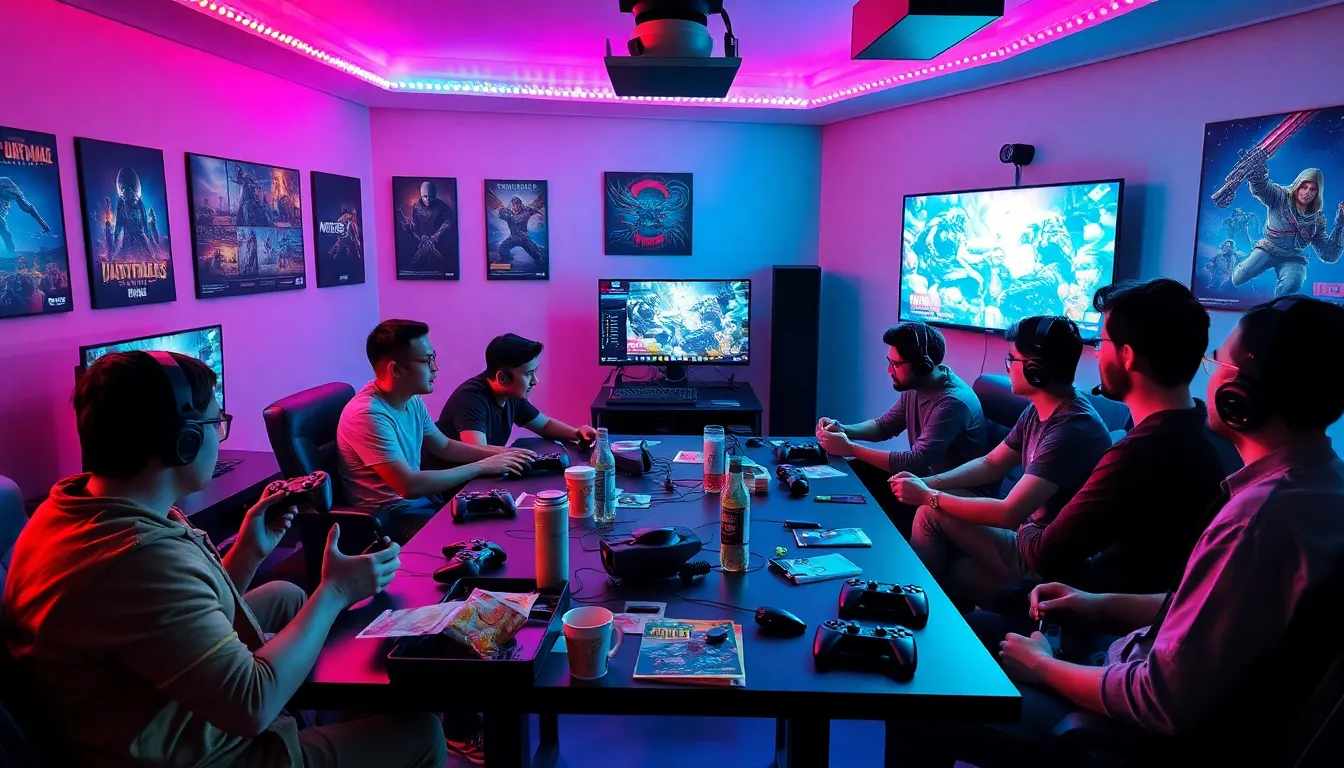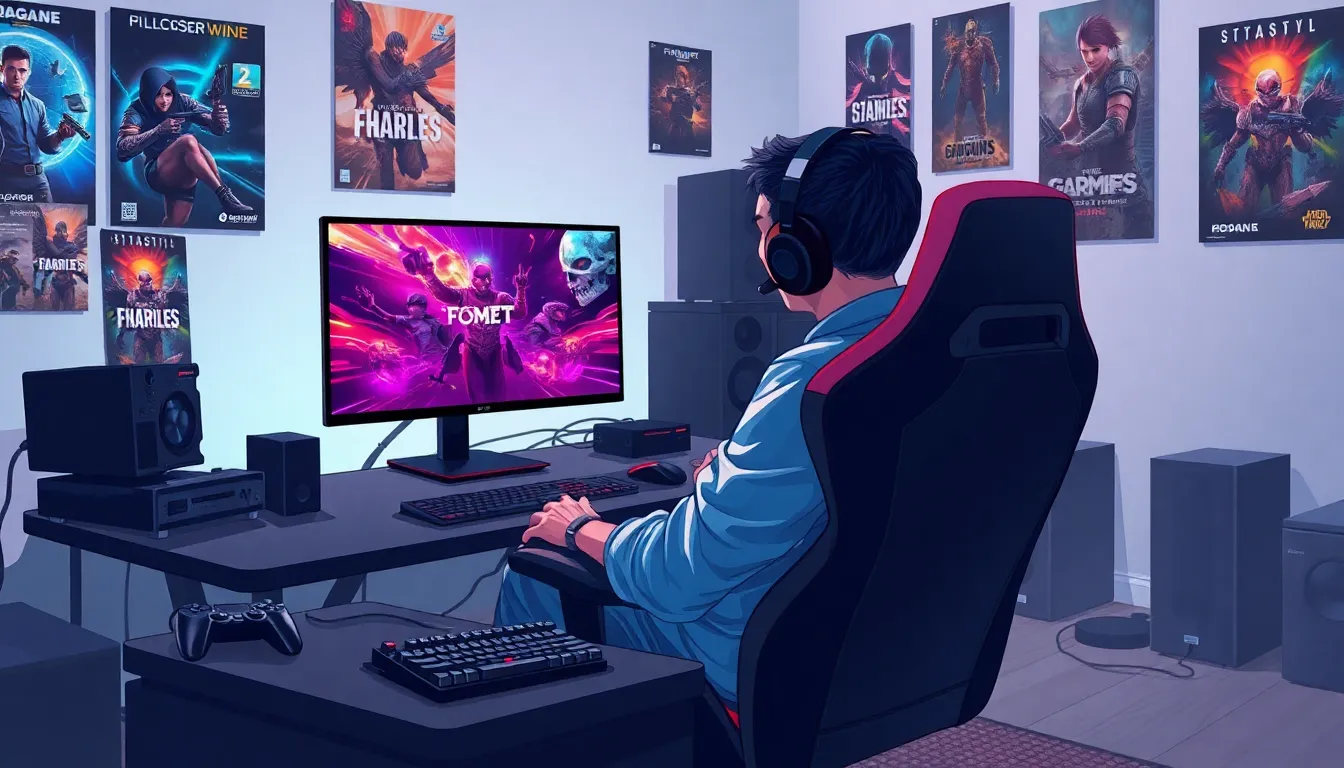In a world where pixels reign supreme and virtual battles unfold daily, gaming reviews are the trusty sidekicks every gamer needs. They’re like having a wise old sage whispering in your ear, guiding you through the maze of titles fighting for your attention. With countless games hitting the shelves, knowing which ones are worth your time (and hard-earned cash) is crucial.
Table of Contents
ToggleUnderstanding Gaming Reviews
Gaming reviews play a crucial role in helping players make informed decisions. Numerous games flood the market, so reviews serve as essential tools for navigating choices.
Importance of Gaming Reviews
Gaming reviews provide insights into gameplay mechanics, graphics, and storylines, shaping players’ expectations. Gamers often rely on reviewers’ expertise to determine which titles are worth their investment. Well-written reviews highlight both strengths and weaknesses, ensuring players choose games that align with their preferences. Players can save time and money by engaging with credible reviews before purchasing games.
Types of Gaming Reviews
Gaming reviews vary widely, including professional critiques and user-generated content. Professional reviews, often authored by established gaming sites or magazines, deliver comprehensive evaluations backed by industry knowledge. User reviews, on the other hand, reflect personal experiences and opinions, offering diverse perspectives. Video reviews have gained popularity as they showcase gameplay footage, providing additional context. Each type of review serves a unique purpose, helping players gather various viewpoints on a game.
Key Elements of a Good Gaming Review


A good gaming review covers essential aspects that influence player experience. Focusing on these key elements enhances clarity for potential buyers.
Gameplay Mechanics
Gameplay mechanics refer to the rules and systems that dictate player interaction. Reviews must clearly explain how these mechanics function and their impact on overall experience. Descriptions of combat systems, progression frameworks, and control responsiveness establish a foundation for understanding gameplay. Insights into resulting player satisfaction create even more context. Highlighting features such as difficulty levels and customization options can also inform potential players about their engagement possibilities.
Graphics and Art Style
Graphics and art style significantly influence a game’s initial impression. Art direction can evoke specific emotions and shape player immersion. Reviews should include assessments of visual fidelity, character designs, and environmental detail. Mentioning frame rates and resolution ensures technical performance is considered. Also, comparing art styles to similar titles can provide more context. Overall, a comprehensive look at visual elements informs readers about the aesthetic experience available.
Sound Design
Sound design plays a pivotal role in creating an immersive atmosphere. Reviews should analyze sound effects and music quality to gauge their effectiveness. A thorough examination of the audio landscape helps players anticipate how sound influences gaming experiences. Notable elements include voice acting, background scores, and the impact of audio cues on gameplay. This analysis not only enhances understanding but also highlights how sound can elevate or detract from overall enjoyment.
Story and Characters
Story and characters enrich the gaming experience by providing depth and emotional connection. Exploring narrative quality and character development allows readers to gauge their engagement potential. Reviews should analyze plot coherence and thematic depth, revealing how well the story resonates with players. Character arcs and their relatability significantly impact players’ investment in the narrative. By addressing these elements, reviewers help gamers determine the story’s appeal before engaging with the title.
Popular Platforms for Gaming Reviews
Various platforms serve as rich sources for gaming reviews, each offering unique perspectives that help players make informed decisions.
YouTube
YouTube has emerged as a dominant platform for gaming reviews, featuring thousands of creators dedicated to gaming content. Creators showcase gameplay footage, providing viewers with insights into graphics, mechanics, and overall experience. Many gamers rely on live commentary to understand how games actually play. Viewers often appreciate the visual aspect of these reviews, as they demonstrate real-time gameplay scenarios. Channels specializing in in-depth analysis contribute valuable critiques, addressing both strengths and weaknesses of each title.
Gaming Blogs
Gaming blogs act as another crucial venue for reviews. Advocates of this medium often provide extensive written content that dives deep into game analysis. These blogs may focus on specific genres or trends, drawing in audiences looking for detailed explorations. Blog posts typically discuss critical aspects, such as storytelling, character development, and graphics. Readers enjoy the personal touch found in many blogs, as authors share their thoughts and experiences, fostering a connection with their audience. Through thorough research, these blogs frequently cite industry trends and player feedback.
Social Media
Social media platforms play a significant role in shaping gaming reviews. Gamers often share their opinions on platforms like Twitter and Reddit, creating vibrant discussions around new titles. Quick posts and threads allow users to express their thoughts and highlight noteworthy features. Influencers share short-form video clips that showcase standout moments, attracting attention and driving engagement. Players find real-time feedback valuable when considering new releases. Hashtags related to games create larger conversations, allowing players to tap into community sentiment and insights.
How to Write an Effective Gaming Review
Writing an effective gaming review requires a structured approach and critical analysis. Focus on these key elements to craft a meaningful review.
Structuring Your Review
Begin with an engaging introduction that gives an overview of the game. Then move into sections covering gameplay, graphics, sound design, and story. Each section should address specific elements, such as the combat mechanics and visual aesthetics, providing clear explanations. Use headings or bullet points to separate topics for easier readability. Conclude with a summary of strengths and weaknesses, helping readers understand the overall value of the game. Such organization enhances clarity, ensuring gamers grasp essential insights.
Tips for Critical Analysis
Approach the game with an open yet discerning mindset. Evaluate gameplay mechanics, focusing on control responsiveness and difficulty balance. Analyze graphics quality and art style, considering their impact on player immersion. Examine sound design, paying attention to audio effects and their contributions to the atmosphere. Investigate the narrative for depth in storylines and character development, as these factors significantly affect engagement. By incorporating these analytical tips, reviewers deliver comprehensive insights that assist gamers in making informed decisions.






